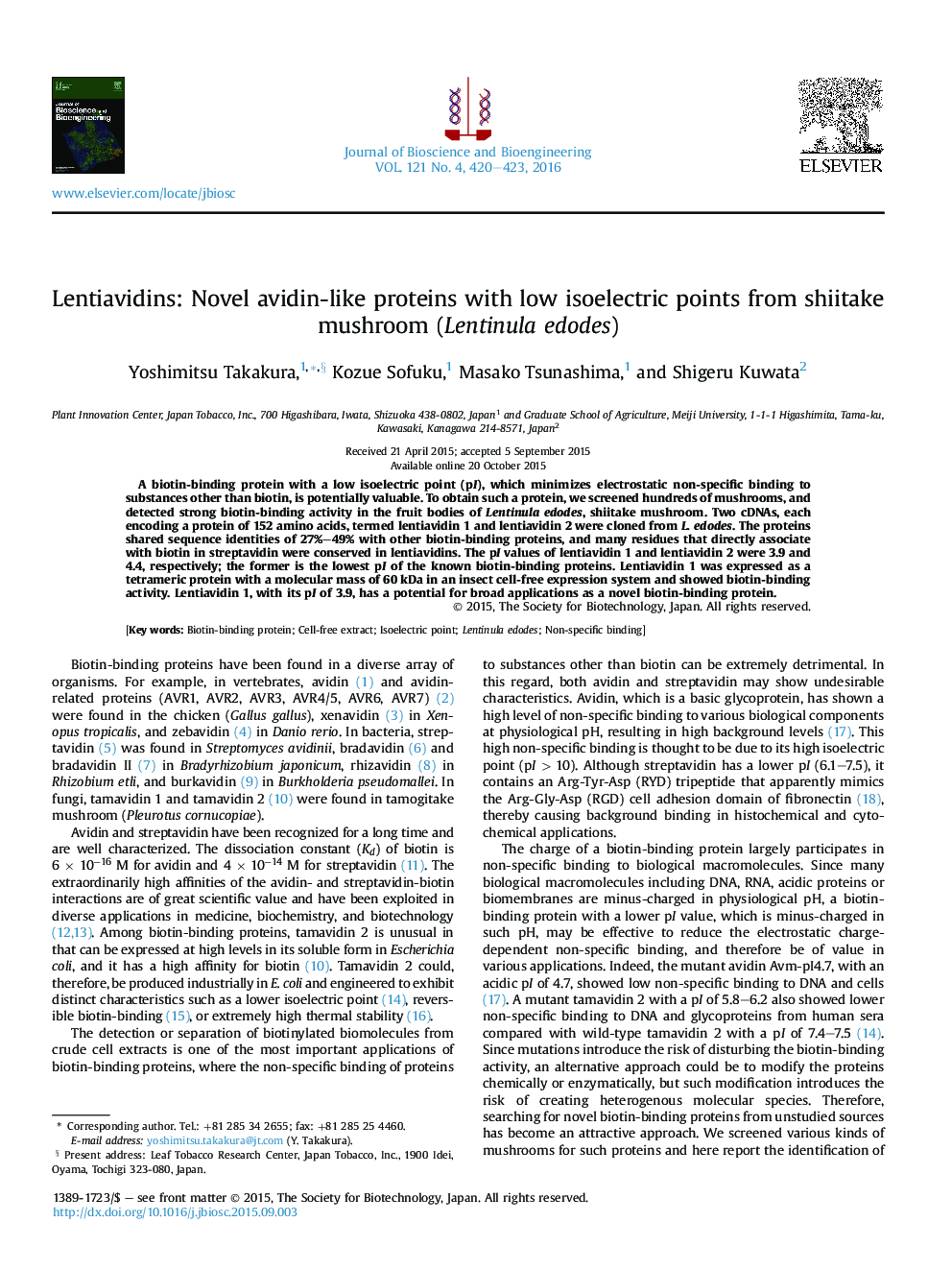| کد مقاله | کد نشریه | سال انتشار | مقاله انگلیسی | نسخه تمام متن |
|---|---|---|---|---|
| 20133 | 43159 | 2016 | 4 صفحه PDF | دانلود رایگان |
• A biotin-binding protein with a low isoelectric point (pI) is potentially valuable.
• We discovered novel biotin-binding proteins (lentiavidins) from Lentinula edodes.
• The pI of lentiavidin 1 was 3.9; the lowest in the known biotin-binding proteins.
• Lentiavidin 1 has potential broad applications as a novel biotin-binding protein.
A biotin-binding protein with a low isoelectric point (pI), which minimizes electrostatic non-specific binding to substances other than biotin, is potentially valuable. To obtain such a protein, we screened hundreds of mushrooms, and detected strong biotin-binding activity in the fruit bodies of Lentinula edodes, shiitake mushroom. Two cDNAs, each encoding a protein of 152 amino acids, termed lentiavidin 1 and lentiavidin 2 were cloned from L. edodes. The proteins shared sequence identities of 27%–49% with other biotin-binding proteins, and many residues that directly associate with biotin in streptavidin were conserved in lentiavidins. The pI values of lentiavidin 1 and lentiavidin 2 were 3.9 and 4.4, respectively; the former is the lowest pI of the known biotin-binding proteins. Lentiavidin 1 was expressed as a tetrameric protein with a molecular mass of 60 kDa in an insect cell-free expression system and showed biotin-binding activity. Lentiavidin 1, with its pI of 3.9, has a potential for broad applications as a novel biotin-binding protein.
Journal: Journal of Bioscience and Bioengineering - Volume 121, Issue 4, April 2016, Pages 420–423
